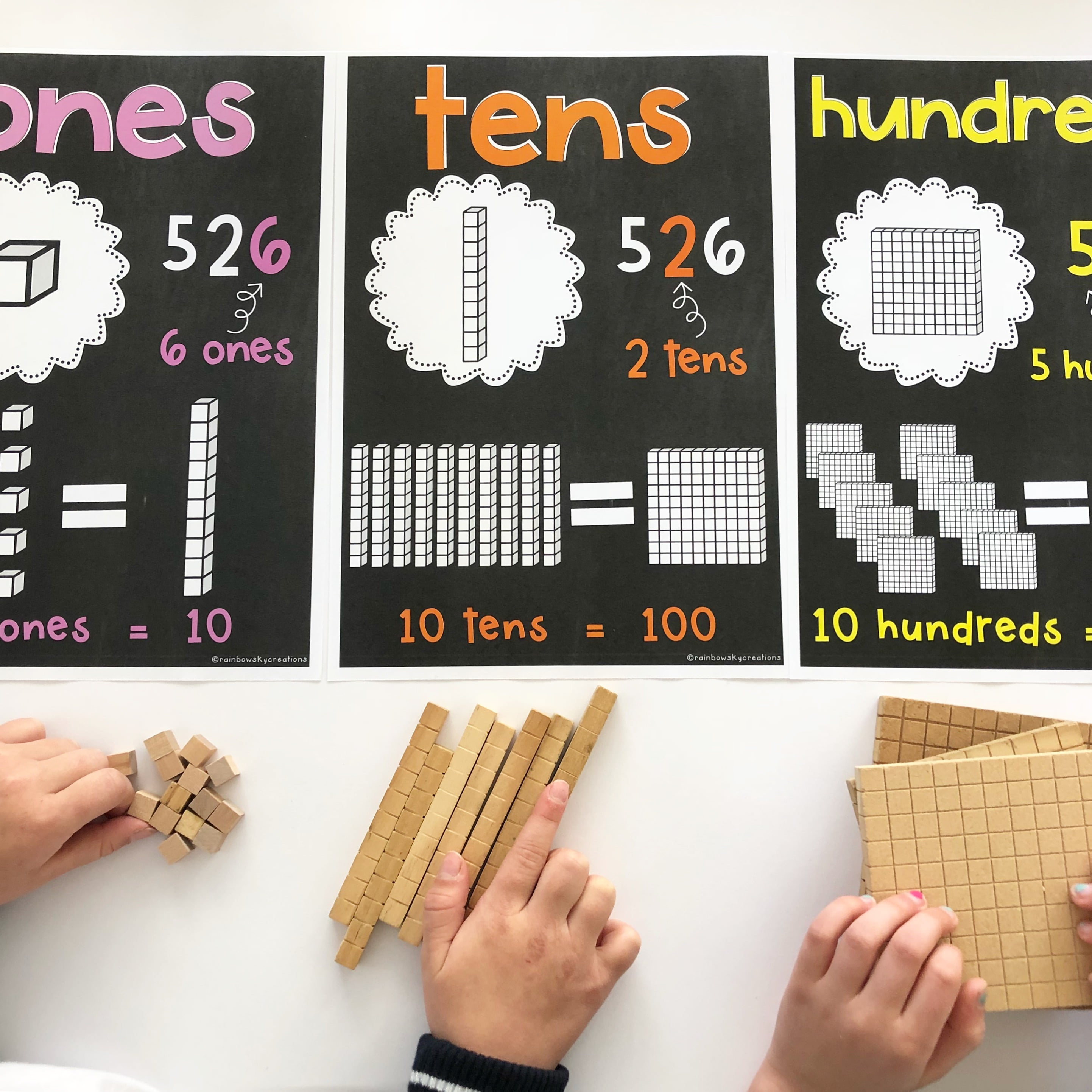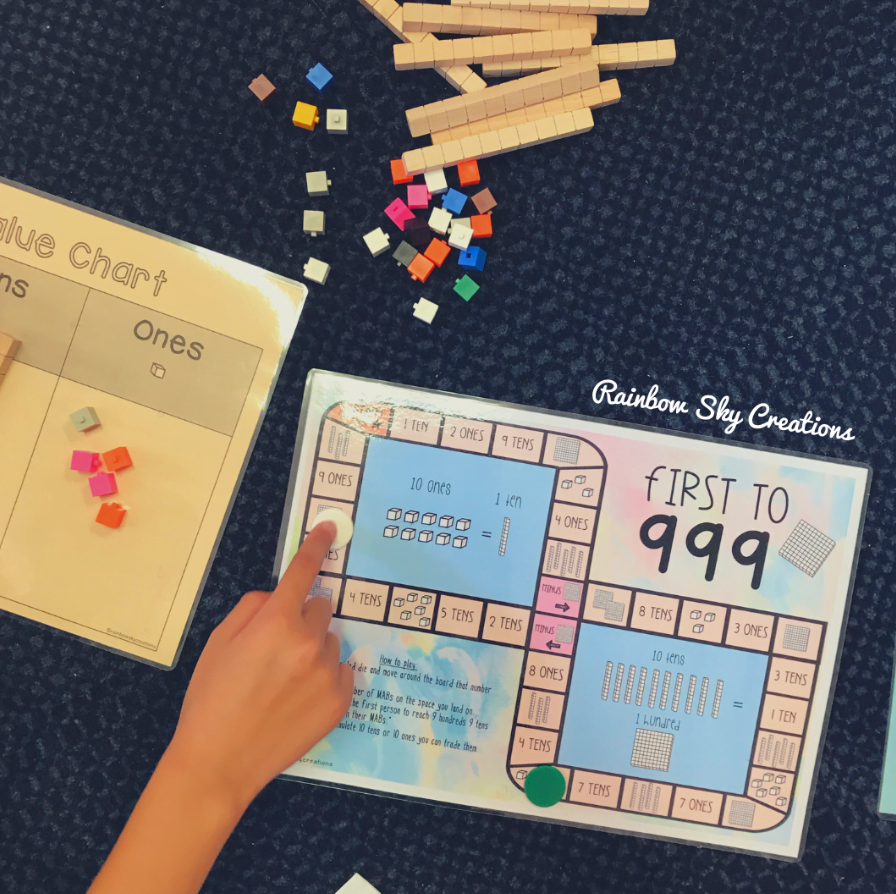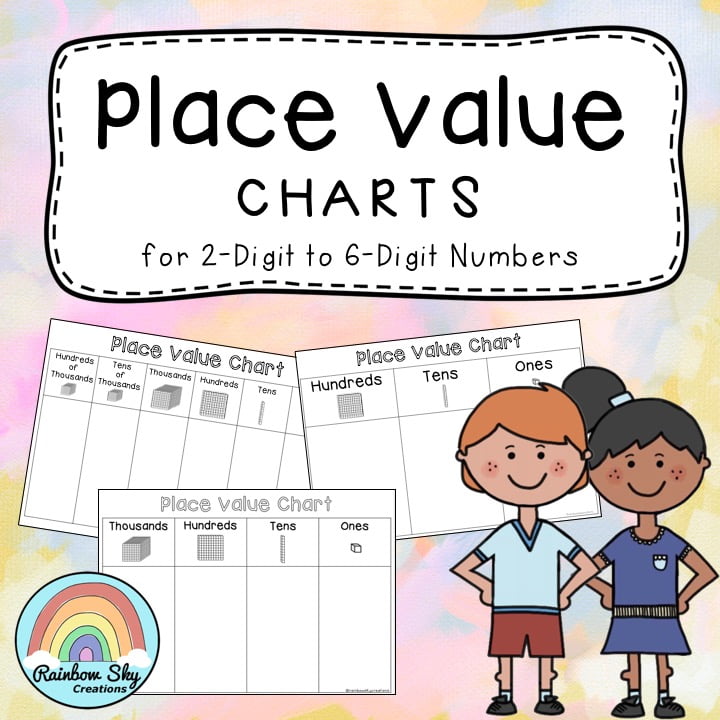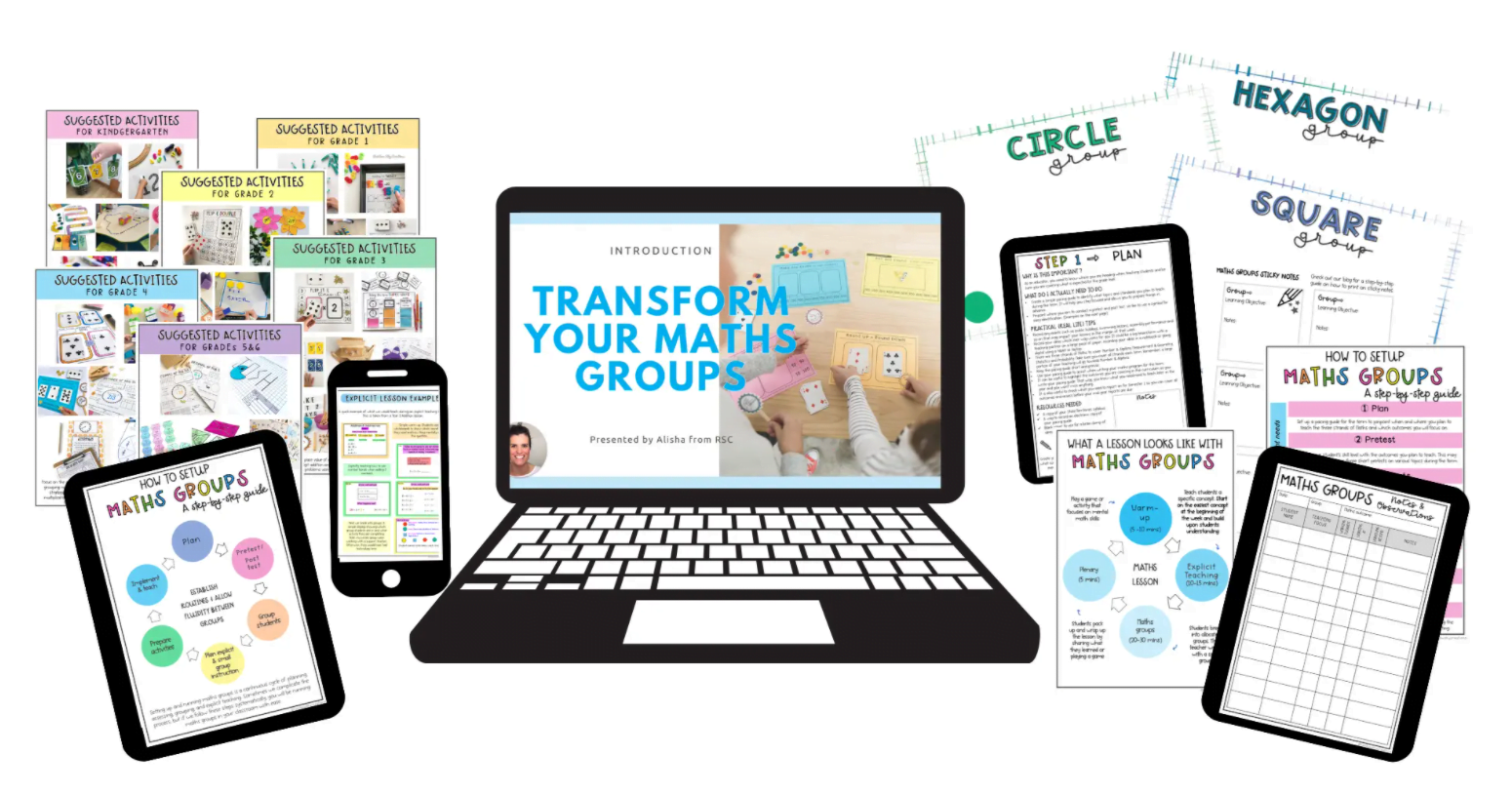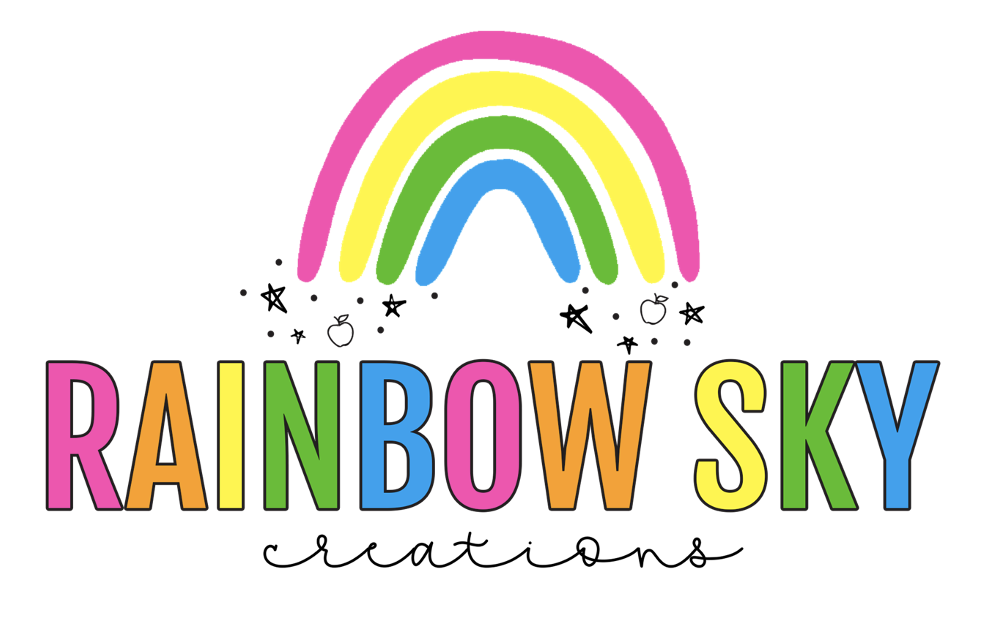If you find your students are having a tricky time understanding the value of a number then trading games are what you need. They are also particularly helpful with developing students understanding of values when adding and subtracting numbers. They are also a superb way for students to repeatedly practice how 10 ones equal 1 ten, 10 tens make 1 hundred and so on.
To help you introduce trading games in your classroom I have included instructions below on how to get started. I’ve used this method with Year 2, Year 3 and Year 4 students. Additionally, it could be done with Year 1 students too.
How to begin
I start trading games by getting the whole class to sit in a big circle. In the middle, I’ll have a large tub of multi-link cubes. I’ll start by clapping a small number. I’ll then ask the students to collect the number of blocks I clapped. For example, 4 claps equal 4 blocks. I’ll continue clapping small numbers of blocks. Such as 3 more claps equals a total of 7 blocks. I make sure I don’t go past students accumulating 10 blocks. Once they have reached 10 blocks I remind them that in the land of 10, 10 blocks make a tower. A tower of TEN!
I’ll continue the activity by clapping out larger numbers. When we get to another total over 10 blocks, such as 12 blocks I’ll see which students remember and there is always quite a few who say, ‘We need to make a tower of 10 because we have too many blocks in the ones.’
Next, we count the total number of blocks. For example, I have 2 towers of 10 and 2 ones. I have a total of 22 blocks.’ During the first introduction of the activity, I don’t use a place value mat. It isn’t until the students become familiar with the concept of trading the ones in for tens and so on that I introduce the place value chart. Usually, I will continue to play the game as a whole class and then let students break into small groups and take turns rolling a dice and adding to their totals.
The aim during the first few times of introducing a trading game is for students to become familiar with the process of trading 10 ones for a ten and calculating the value of the numbers.
The following week, students will play the trading game using two 6 sided dice to build confidence and a better understanding of place value. During this time I’ll begin using MAB manipulatives for trading 10 ones for 1 ten because I frequently use these as a reference when discussing the place value of a whole number. As well, they link perfectly with the MAB posters on display.
What I love about trading games is that not only are students consolidating their knowledge of place value, but they are also practising adding and subtracting single digit to multi-digit numbers.
The Next Step after Introducing Trading Games
As students become more confident with playing the trading game, and for the majority, it doesn’t take longer than a week or two (usually quicker for older students) I will then move onto the next phase.
With the whole class, I will quickly recap by adding numbers and reading aloud the value of the number, followed next by introducing subtraction. Here’s an example of how I progress onto subtraction.
I’ll start with clapping and the students adding up the blocks. By now we can more quickly through this part as students have become more proficient, allowing us time to focus more on our Maths vocabulary. Once we reach over 3 tens I’ll then say to the students we are now going to subtract from our total. What does subtract mean? Another perfect opportunity to delve into our Maths vocabulary. Now we’ve established what subtraction means I’ll clap out a small number.
Here’s a mini script on how it would go:
Teacher:How many tens do we have? 3 tens
How many ones do we have? 4 ones.
How many blocks in total? 34.
Teacher claps 3 times.
Teacher: Remember we are taking away. How many do we have left? 3 tens and 1 one.
How many blocks in total? 31.
Teacher claps 4 more times
Teacher: How many do we have to take away now? 4 ones!
Student: But we don’t have enough ones?
Teacher: Where do we get the ones from?
Listen to student’s answers and don’t correct them until hopefully, a student realises they will need to trade 1 ten in for 10 ones. Once this discovery has been made everyone trades 1 ten in for 10 ones.
Teacher: How many tens do we have now? 2 tens
How many ones do we have? 11 ones
Teacher: Can we now take away 4 ones? Yes!
How many do we have left now? 2 tens and 7 ones which equal 27.
I’ll continue using this method to work on subtracting with the whole class until we get close to zero. During this time I will introduce place value mats to assist students in making the link between the value of a number (read to the bottom of this article to find a copy of our FREE place value mats!)
We have put together a Place Value pack which has activity sheets, as well as games I like to play with my class. My favourite is the ‘First to 999’ trading game which is a great consolidation for students once they have grasped the concept. I even like to play it backwards, so students are starting with 999 and race to be the first to reach zero.
To help get trading games up and running in your classroom we have these free place value mats for you.
Need more resources to teach place value? Check out these!
WANT TO KNOW THE REAL SECRET TO DELIVER FUN & DIFFERENTIATED MATHS LESSONS IN JUST ONE WEEK?
Imagine running a maths group program which is uncomplicated, easy to implement and stress free...
Introducing…
TRANSFORM YOUR MATHS GROUPS
- Learn how to Transform your lessons with maths groups so that you meet the learning needs of every student
- Run successful maths lessons that are engaging & outcomes-based.
- Discover a streamlined 6-step system for targeted lessons.
- Make maths a time of day you and your students love.
Click here to join us and TRANSFORM YOUR MATHS GROUPS.
What to read next:
The Place Value Posters every Classroom Needs
